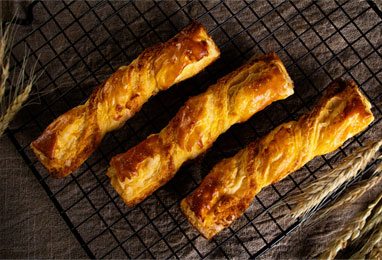Water-soluble dietary fiber-resistant dextrin
The World Health Organization and the nutritional community of various countries have given unified recommendations on dietary fiber intake, that is, the daily intake per person is between 25g and 35g. Because consuming more than 25 grams of fiber per day is very beneficial to health and helps prevent cardiovascular disease, diabetes and a series of other health problems, but the daily intake of Chinese residents is far from meeting this requirement.
What is resistant dextrin?
Resistant dextrin is a close relative of resistant starch, but is rarely found in natural foods. It is processed from corn starch or wheat starch. The process is roughly to first decompose starch into dextrin, and then polymerize it. During the re-polymerization process, some digestion-resistant glycosidic bonds are formed, thereby producing resistant dextrin, and then separated, purified, and refined to obtain a high-purity resistant dextrin product. . Resistant dextrin has excellent water solubility, its aqueous solution is transparent or light yellow, and its viscosity is very low. It appears to be absent in beverages. Simply put, resistant dextrin is an extremely soluble soluble dietary fiber.
What does resistance mean?
Resistance refers to "anti-digestion", which means it cannot be digested and absorbed by the human small intestine. The word "resistant" was first used for "resistant starch". Resistant starch refers to starch that cannot be absorbed in the human small intestine and is fermented by bacteria in the large intestine. It is classified as dietary fiber.
Resistant starch is found in natural foods such as green bananas, raw potatoes, whole grains, partially ground seeds, beans, etc. Sometimes, it is also generated during the cooking and gelatinization process of ordinary starch. The principle is due to the molecular conformation. Changes cannot be absorbed by small digestions.
What is the function of resistant dextrin?
In addition to increasing satiety (reducing energy intake, which can help weight loss) , promoting defecation (relieving constipation) , and promoting intestinal flora balance (normal flora fermentation) , soluble dietary fiber, like other dietary fibers, has The advantage is that it inhibits cholesterol absorption and bile acid reabsorption in the small intestine (helps to reduce blood cholesterol) , interferes with glucose absorption (helps to obtain lower postprandial blood sugar) , etc.
What are the application fields of resistant dextrin?
Resistant dextrins are widely used in beverages, dairy products, health products, alcohol, baking, condiments and many other fields.
In applications in dairy products, resistant dextrin can be added to dietary fiber-fortified milk drinks as simply as sugar without affecting the original flavor of the food; resistant dextrin has a similar taste to fat and is low in calories. , it can replace part of the white sugar or fat to prepare low-calorie ice cream, low-fat yogurt, etc.; the addition of resistant dextrin can fully bring out the biological functions of beneficial intestinal bacteria such as lactobacilli and bifidobacteria. This creates a huge multiplier effect.
When used in infant food, the bifidobacteria in infants and young children, especially after weaning, decrease sharply, leading to diarrhea, anorexia, growth retardation, and reduced utilization of nutrients. Eating resistant dextrin foods can improve the utilization of nutrients and promote the absorption of trace elements such as calcium, iron, and zinc.
Adding different types of dietary fiber to baked goods can increase and improve the color of the bread. Adding 3% to 6% dietary fiber to the flour can strengthen the dough's gluten strength, give it a good taste, and have a special aroma; biscuit baking affects the quality of the flour's gluten strength. The requirements are very low, which makes it easier to add resistant dextrin in a large proportion, and is more conducive to making a variety of health-care biscuits with fiber functions; pastries contain a lot of water during production, which will solidify into soft products during baking, affecting the quality and water-soluble Adding sex-resistant dextrin to pastries can keep the product soft and moist, increase the shelf life, and extend shelf storage time. As a low-calorie soluble food raw material, resistant dextrin has broad development prospects in the food industry.
-
Inulin
-
Polydextrose
-
Resistant Dextrin
- Trehalose
- Resistant Dextrin(Soluble Corn Fiber)
- Resistant Dextrin(Soluble Corn Fiber)(Powder)
- Resistant Dextrin(Soluble Tapioca Fiber)(Powder)
- Resistant Dextrin(Soluble Tapioca Fiber)(Liquid)
- Resistant Maltodextrin Powder
- Resistant Maltodextrin Powder (Liquid)
- Organic Resistant Dextrin Powder (Corn Type) 70%
- Organic Resistant Dextrin Powder (Corn Type) 90%
- Organic Resistant Dextrin Powder (Tapioca Type) 70%
- Organic Resistant Dextrin Powder (Tapioca Type) 90%
- Organic Resistant Dextrin Syrup (Corn Type) 70%
- Organic Resistant Dextrin Syrup (Corn Type) 90%
- Organic Resistant Dextrin Syrup (Tapioca Type) 70%
- Organic Resistant Dextrin Syrup (Tapioca Type) 90%
- Organic Resistant Maltodextrin Powder (Corn Type) 70%
- Organic Resistant Maltodextrin Powder (Tapioca Type) 70%
- Organic Resistant Maltodextrin Syrup (Corn Type) 70%
- Organic Resistant Maltodextrin Syrup (Tapioca Type) 70%
- Organic Soluble Corn Fiber Powder 70%
- Organic Soluble Corn Fiber Powder 90%
- Organic Soluble Corn Fiber Syrup 70%
- Organic Soluble Corn Fiber Syrup 90%
- Organic Soluble Tapioca Fiber Powder 70%
- Organic Soluble Tapioca Fiber Powder 90%
- Organic Soluble Tapioca Fiber Syrup 70%
- Organic Soluble Tapioca Fiber Syrup 90%
- Resistant Dextrin Powder (Corn Type) 70%
- Resistant Dextrin Powder (Corn Type) 90%
- Resistant Dextrin Powder (Tapioca Type) 70%
- Resistant Dextrin Powder (Tapioca Type) 90%
- Resistant Dextrin Syrup (Corn Type) 70%
- Resistant Dextrin Syrup (Corn Type) 90%
- Resistant Dextrin Syrup (Tapioca Type) 70%
- Resistant Dextrin Syrup (Tapioca Type) 90%
- Resistant Maltodextrin Powder (Corn Type) 90%
- Resistant Maltodextrin Powder (Tapioca Type) 90%
- Resistant Maltodextrin Syrup (Corn Type) 90%
- Resistant Maltodextrin Syrup (Tapioca Type) 90%
- Soluble Corn Fiber Powder 70%
- Soluble Corn Fiber Powder 90%
- Soluble Corn Fiber Syrup 70%
- Soluble Corn Fiber Syrup 90%
- Soluble Tapioca Fiber Powder 70%
- Soluble Tapioca Fiber Powder 90%
- Soluble Tapioca Fiber Syrup 70%
- Soluble Tapioca Fiber Syrup 90%
-
Dioscorea Opposita Dietary Fiber
-
Wheat Dietary Fiber
-
Oat Dietary Fiber
-
Polydextrose Powder (Conventional Type)
-
Polydextrose Powder (Special Type)
-
Polydextrose Powder (Sugar Free Type)
-
Polydextrose Powder (Type II)
-
Polydextrose Powder (Type III)
-
Polydextrose Syrup (Conventional Type)
-
Polydextrose Syrup (Refined Type)
-
Polydextrose Syrup (Special Type)
-
Polydextrose Syrup (Standard Type)
-
Polydextrose Syrup (Sugar Free Type)
- Fructo Oligosaccharide
-
Malt Oligosaccharide
- Isomalto-oligosaccharide 900 Powder
- Isomalto-oligosaccharide 900 Powder(Corn)
- Isomalto-oligosaccharide 900 Powder(Tapioca)
- Isomalto-oligosaccharide 900 Syrup
- Isomalto-oligosaccharide 900 Syrup(Tapioca)
- Isomalto-oligosaccharide 900 Liquid (Corn)
- Isomalto-oligosaccharide 900 Liquid (DP3)
- Isomalto-oligosaccharide 900 Liquid (Tapioca)
- Isomalto-oligosaccharide 900 Powder (Corn)
- Isomalto-oligosaccharide 900 Powder (DP3)
- Isomalto-oligosaccharide 900 Powder (Tapioca)
- Organic Isomalto-oligosaccharide 900 Liquid (Corn)
- Organic Isomalto-oligosaccharide 900 Liquid (DP3)
- Organic Isomalto-oligosaccharide 900 Liquid (Tapioca)
- Organic Isomalto-oligosaccharide 900 Powder (Corn)
- Organic Isomalto-oligosaccharide 900 Powder (DP3)
- Organic Isomalto-oligosaccharide 900 Powder (Tapioca)
- Xylo-oligosaccharide
- Galacto-oligosaccharide
-
Mannan Oligosaccharide
-
Isomaltulose Powder
-
Saigao Stachyose






